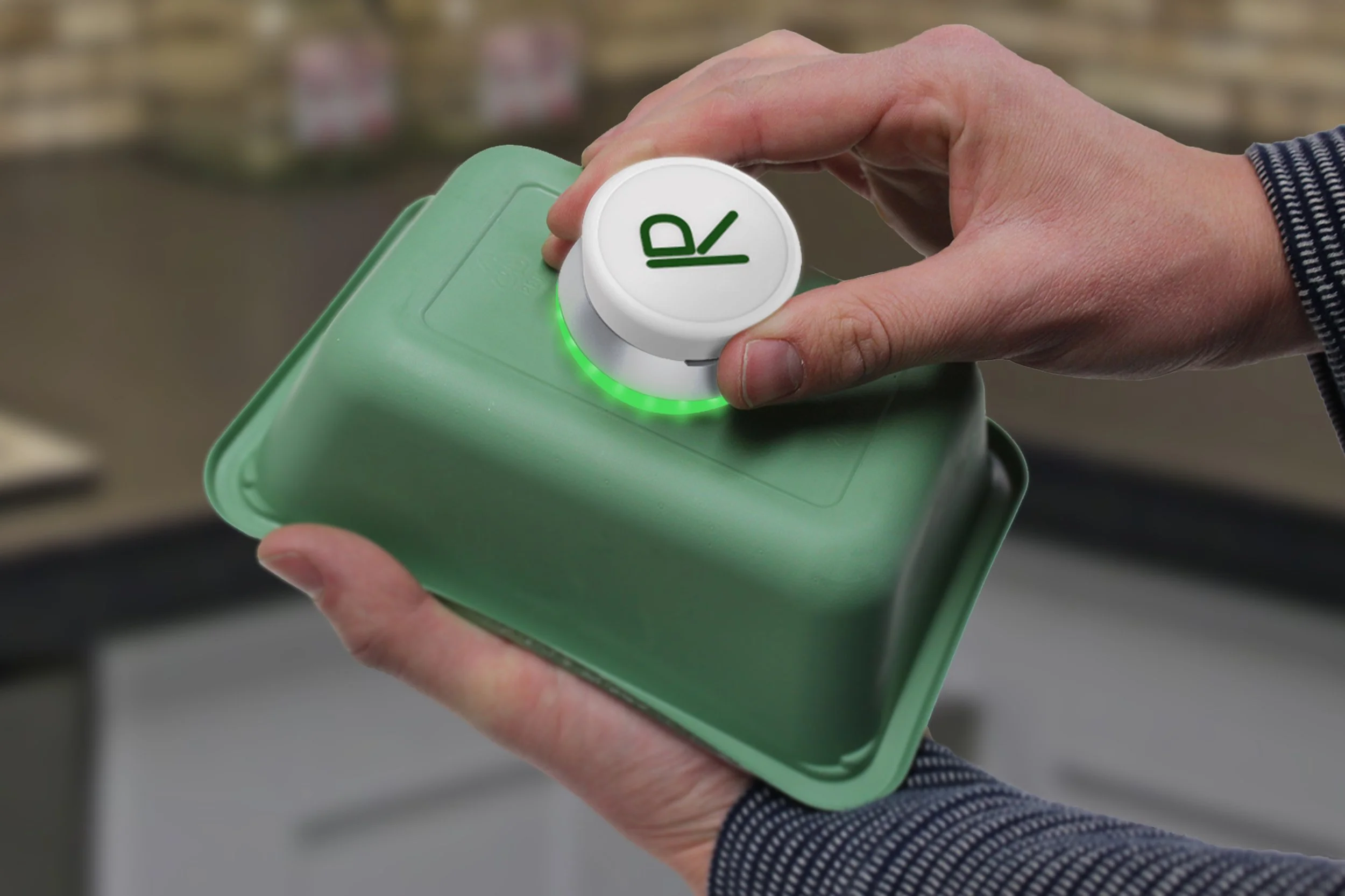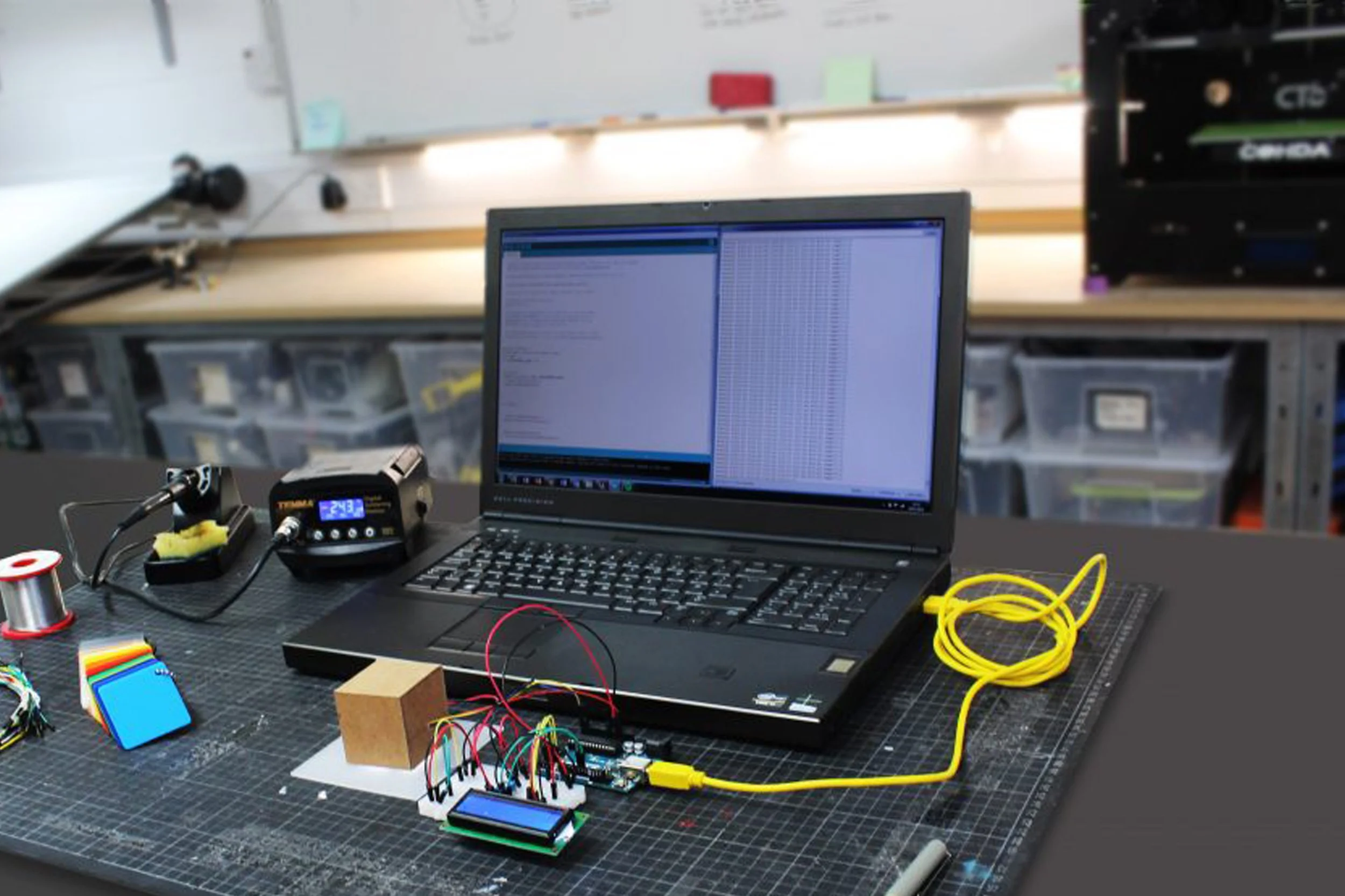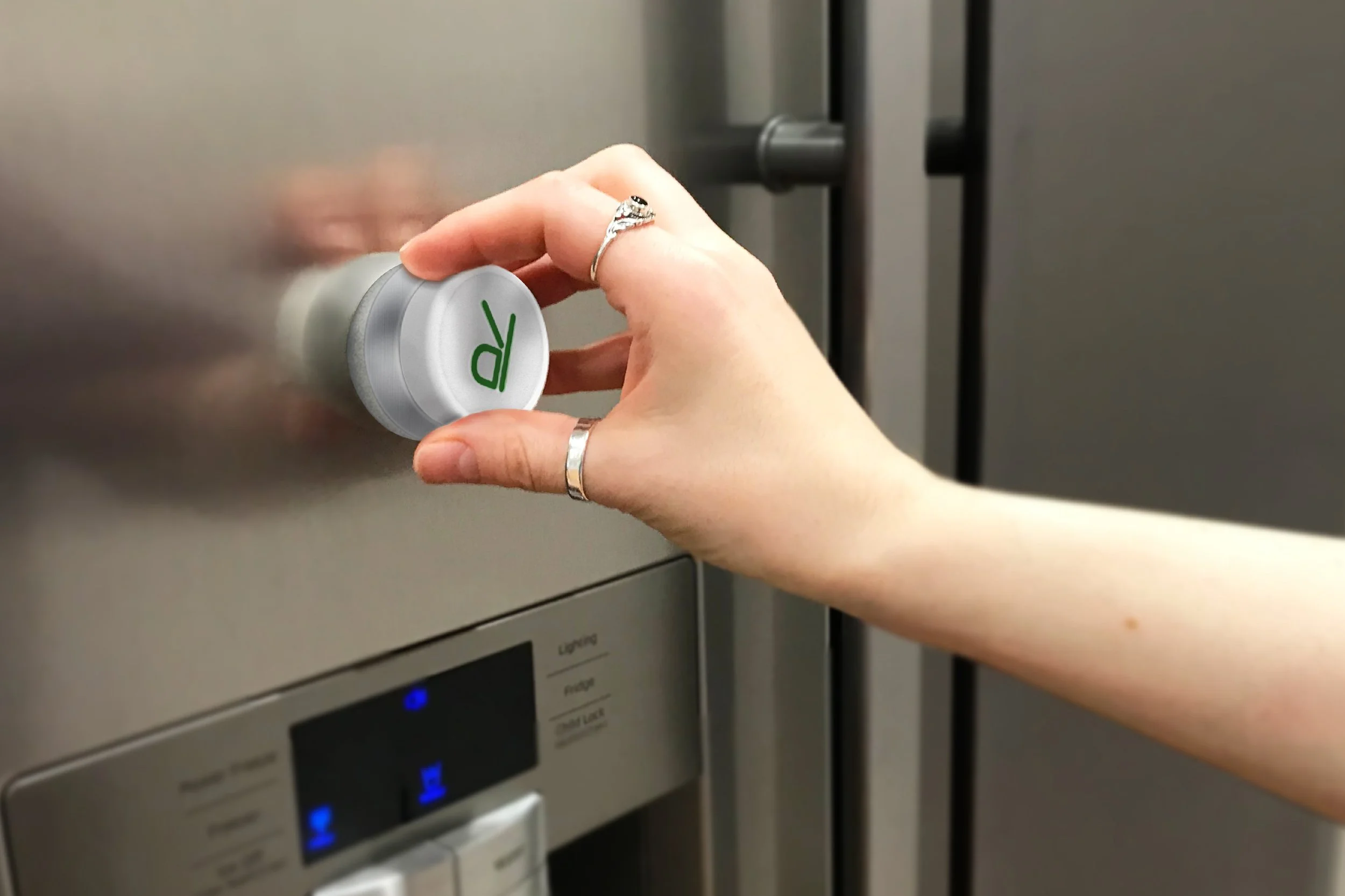R.I.D: Recycling Identification Device
For even the most discerning and diligent recyclers the confusion over whether a waste item can or cannot be recycled is a common one. R.I.D uses near-infrared (NIR) spectroscopy to easily identify recyclable waste packaging materials at home.
Up to 60% of recyclable material is thrown into household waste
This is caused by the changing guidelines imposed by waste organisations and the multitude of different packaging materials that consumers commonly encounter. This results in two negative outcomes: the consumer will attempt to recycle non-recyclable items causing issues for waste processors or the consumer disposes of a recyclable item into their general household waste leading to landfill.
Cohda has explored the possibilities of near-infrared (NIR) spectroscopy to easily identify waste packaging materials at home.
The outcome being our R.I.D (Recycling Identifying Device) concept. This, simple to use, handheld device uses NIR spectroscopy: light that sits outside of the normal visible spectrum, to clearly identify appropriate recyclable and non-recyclable materials. When a material encounters NIR radiation, different bonds within the material absorb varying wavelengths along the spectrum, giving the material a unique “digital fingerprint” or absorption pattern, regardless of the products size, shape or colour.
Using R.I.D at Home
Holding the R.I.D against waste packaging triggers it to scan using the NIR. The device can then identify the product material from a stored database of these digital fingerprints and indicate to the user through illumination and haptic feedback whether or not it is recyclable.
We propose this low-cost device would be issued by waste organisations or city councils to every household. The outcome of implementing an R.I.D system would be a significant reduction in landfill and more effectively sorted recyclable materials heading to processing sites. Although an R.I.D solution does not eliminate the use of plastics, it shifts us to a more circular economy requiring minimum changes to existing processes and infrastructure.
Hassle Free User Experience
As supermarkets and brands release new products and make changes to current packaging, updates will be required to the R.I.D database. To make these updates accessible to all computer competency levels they will be delivered in the form of a rewritable RFID card attached to the household waste bin. When an RFID update card is displayed, the user simply touches the R.I.D device to the card and the update is transferred. No smartphone apps, connection to the internet or access to a PC required.
The ergonomic low-profile of R.I.D means it can be easily stored upright on a fridge or a metal bin. A silicone sleeve means that should the device get dirty it can be easily cleaned which is crucial in a kitchen environment, particularly when dealing with waste.
Our priority throughout this project was to reduce environmental impact in material, transport and end-of life, hence RID has been designed to allow for end-of-life disassembly and recyclability.
Key Expertise
Research
Creative innovation
Product design
Industrial design
Human factors
Mechanical engineering
Sensor programming and control
Prototyping
Design for manufacture







